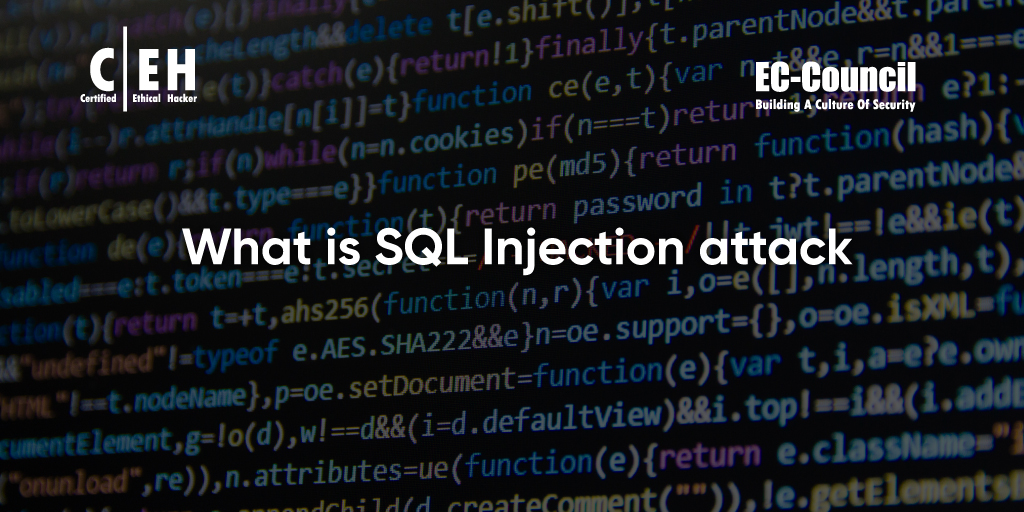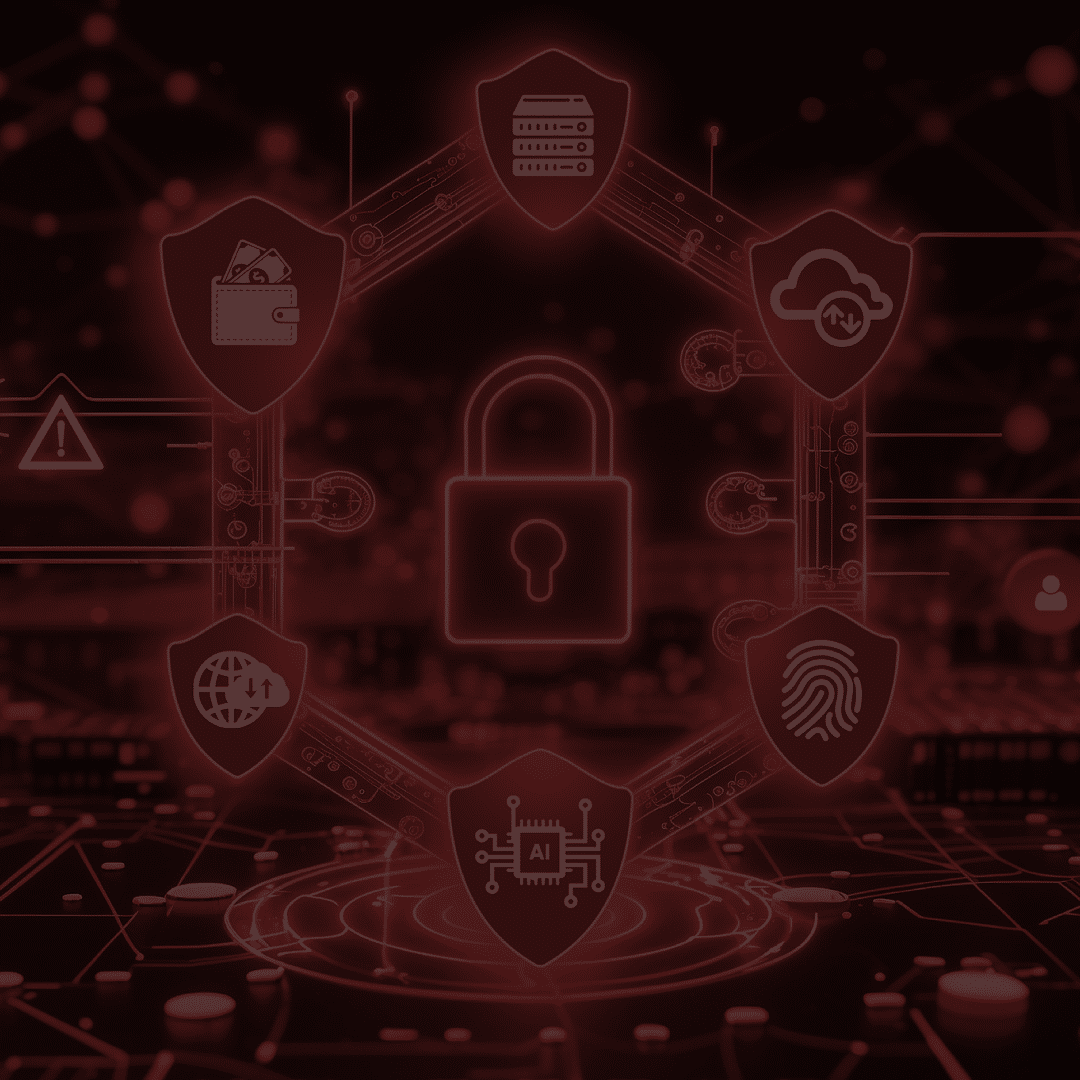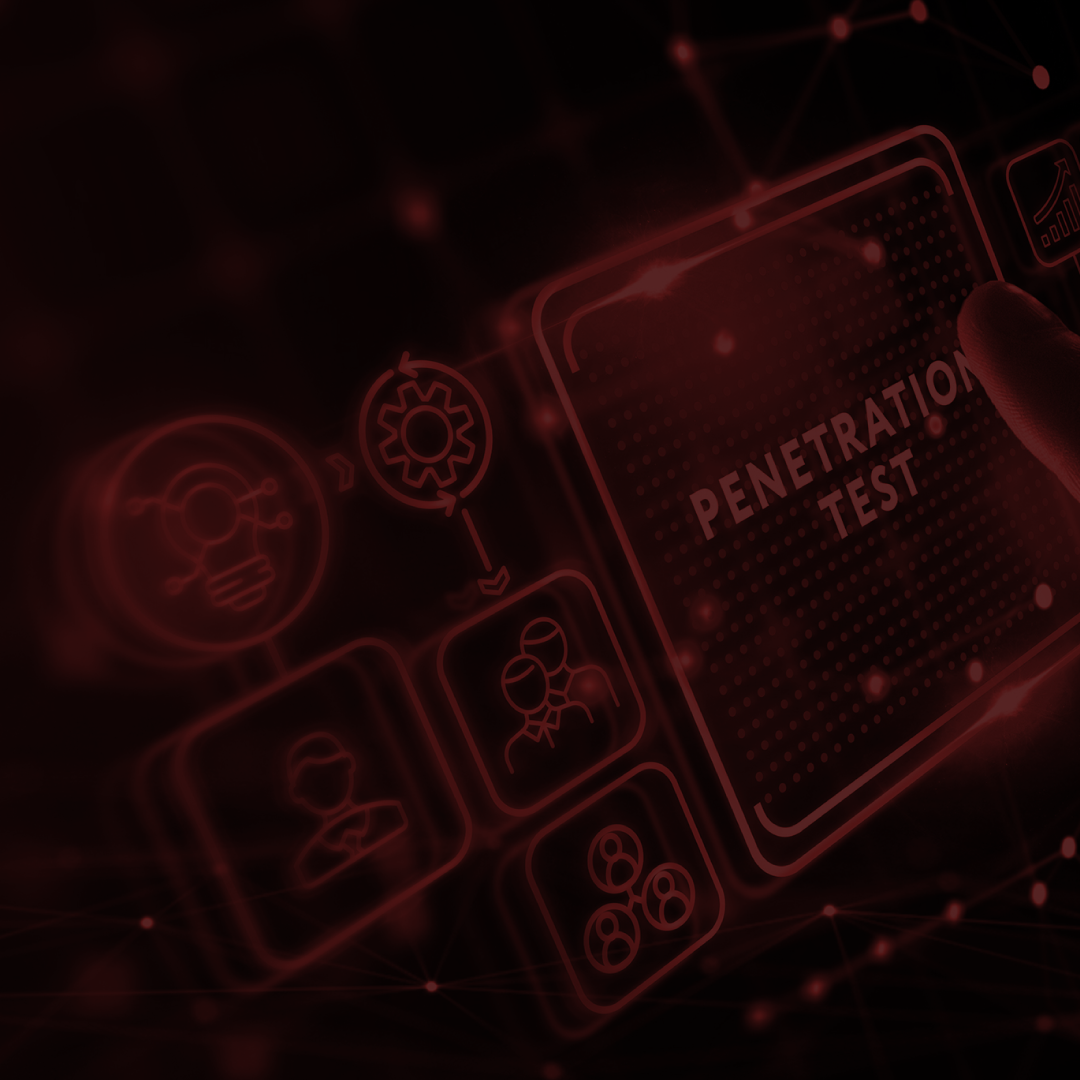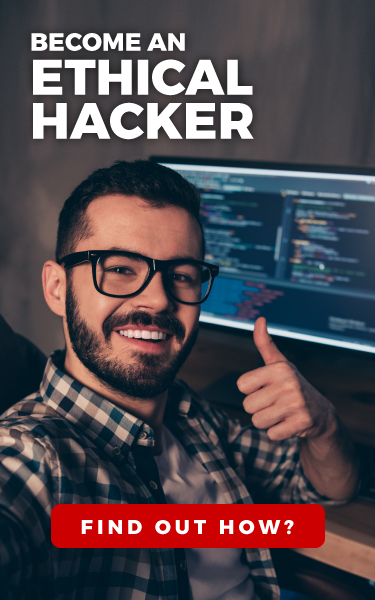Most of the prominent data breaches that occur today have been the outcomes of an SQL Injection attack, which has led to regulatory penalties and reputational damages. An effective SQL Injection attack can lead to unapproved access to delicate data, including credit card information, PINs, or other private information regarding a customer. In some instances, an attacker can acquire a dogged backdoor into an establishment’s systems, resulting in a continuing breach that can be overlooked for a prolonged timeframe.

The moment sensitive data is breached in any cyberattack, it may be hard to ever recover fully. The good news is that both attackers and defenders can use the SQL Injection application. For instance, a company that has been compromised by SQL Injection attacks or vulnerabilities can employ the services of a Certified Ethical Hacker to help them access loopholes using SQL injection attacks.
No company can claim to have completely fortified its security against cyberattacks. This is why the best practice for every business is to begin by identifying the most common types of vulnerabilities and mitigate them to prevent further exploitation and to stop them before they escalate. SQL Injection attacks are itemized on the top 10 lists of application security threats that companies face on the OWASP webpage. Thus, IT professionals, cybersecurity professionals, and cybersecurity enthusiasts need to understand what an SQL Injection is.
We will now explore every detail about an SQL Injection attack to discover what it is based on, how it works, and how an SQL Injection can be tracked and prevented
What Is an SQL Injection Attack?
SQL Injection (SQLi) is a popular attack vector that makes it possible for an attacker to perform malicious SQL statements for backend database manipulation or restrict the queries that an application makes to its database. Attackers take advantage of SQL Injection vulnerabilities to bypass login and other application security procedures. In simple words, SQL Injection permits an attacker to access data that they would normally be unable to recover. This data may comprise a few items, such as private details about a client, sensitive company data, or user lists.
An SQL Injection attack is based on an “injection” or insertion of a SQL query through input data from the customer to the application. SQL Injection is typically recognized as an attack vector for websites; however, it can be exploited to attack any number of SQL databases. The actions of a successful SQL Injection exploit can access delicate information from the database, amend the data from the database (Insert, Modify, and Delete), retrieve the content of a specified file available on the DBMS file system, become administrators of the database server (including shutting down the DBMS), and in some situations, send commands to the operating system.
Simply, a successful SQL attack can be carried out through the following methods:
- Adjusting or compromising data
- Exfiltrating or pinching data
- Sidestepping authentication
- Changing database permissions
- Removing data
- Running arbitrary code
Based on Akamai’s report, it was demonstrated that SQL Injection currently represents about 65.1 percent (almost two-thirds) of all web application attacks. This is 44 percent above the web application layer attacks represented by SQLi in 2017. Many web applications have SQL Injection vulnerabilities, indicate the fairly limited attention given to the security application development phase.
Why Do Hackers Use SQL Injection?
Hackers use SQL Injection to attempt to enter a precisely created SQL commands into a form field rather than the predictable information. The reason for this is to secure a response from the database that will enable the hacker to recognize the construction of the database, including table names. If the SQL Injection attack is finalized successfully, it has the possibility of being extremely damaging to any individual or business.
SQL Injection is incredibly popular with ASP and PHP applications based on the pervasiveness of outmoded functional interfaces. Owing to the characteristics of existing programmatic interfaces, ASP.NET, and J2EE applications are often unlikely to have effortlessly exploited SQL Injections. The detrimental impacts of SQL Injection attacks can be very severe. This severity is restricted by the skill and imagination of the hacker, and to some degree, defense-in-depth countermeasures, including short privilege link to the database server.
How Does SQL Injection Work?
SQL is a query language intended to run data kept in functional databases. SQL queries are implemented to perform commands, like updates, data retrieval, and deletion of records. Diverse SQL essentials execute these tasks. Examples include, queries using the SELECT statement to recover data through user-offered strictures.
For an SQL Injection attack to be executed, the hacker must first discover defenseless user inputs in the web application or web page. SQL Injection is then exploited by unscrupulous hackers to locate the IDs of other users within the database, and these users are then impersonated by the attacker. The impersonated users are often people with data privileges such as the database administrator.
The web application or web page with an SQL Injection vulnerability exploits the user’s input openly in an SQL query and generate input content. This type of content is usually referred to as a “malicious payload,” and it represents the most significant aspect of the attack. The malicious SQL commands are performed in the database once the malicious hacker sends this content.
Since SQL makes it possible for you to choose and output data from the database, an SQL Injection vulnerability may permit the attacker to have full access to the entire data within a database server. SQL is designed in such a way that it allows you to modify or change the data in a database and insert new ones. An attacker can use SQL Injection in a financial application to make some transactions void, change balances, or move money from the user’s account to another account.
What Is SQL Injection Example?
- Retrieving hidden data: This occurs by modifying an SQL query to recover further outcomes.
- UNION attacks: Here, the attacker recovers data from diverse database tables.
- Subverting application logic: Here, the attacker modifies a query to compromise the application’s logic.
- Blind SQL Injection: In this situation, the results of a query a user controls do not return in the application’s responses.
- Examining the database: Here, you can remove the information regarding the structure and version of the database.
- wsmith,JusticeIsHere!
- jsparks,Pow3rPassword$Secur3ed
- kperry,P@$$w0rd
A solid password must be primed and hashed when placed in a database. Avoid using cleartext to avoid being compromised. When you want to log in, you would have to enter your username and passwords in the login page. The information you enter is sent to the website’s server, which constructs a SQL query and that query is sent to the database server. This is what the query would look like:
Select ID from Users where username=’kperry’ and password=’P@$$w0rd’
How SQL work is that each of the rows the query requests is assessed based on a true or false comparison. Using the above example as a guide, the query suggests that, for every row where the username is kperry and the password is P@$$w0rd, we check the Users table and give back the ID value. Usually, the web site’s server realizes what is sent back via the database server. With our example, the website’s server would get a ‘1’ and allow the user to go past the login page.
However, if we want to get malicious with the query, we will have to trick the server into believing that we have authentication, considering that the database server executes a true-or-false check. This can be achieved by including an OR to our password. If we login with x’ or a=a as our password, a new SQL query would be created:
Select ID from Users where username=’kperry’ and password=’x’ or a=a
We would successfully bypass being kicked off because even though x is not kperry’s password, the database server will automatically verify the second option. It will check the alternative if x is not kperry’s password, is an equal a? Since it does, the ID will be returned to the application, and the user will have a successful authentication. Moreover, the situation does not necessarily have to be an a=a situation. Once the two values are equal, then this command would work. You can have b=b, 1=1, or even 2452=2452.
If the webpage can display data, it might be able to print other data to the screen. To obtain the data, you can try chaining two SQL requests together. Furthermore, we can add a second statement to our ‘ or a=a, such as UNION SELECT LastName, security code from Contacts, and credit card details. Additional clauses such as this might require more input. Nevertheless, gaining access to data is the final objective of an SQL Injection attack.
Another procedure can be adapted for blind SQL Injection, the technique where no data is returned to the screen to inject other hints. Comparable to our ‘ or a=a situation, we can command the server to take a nap. We could include: “ ‘ or nap(20) ” and this executes what it appears to be. This commands the database server to snooze for 20-seconds, while other responses are deferred.
What are the Types of SQL Injection?
SQL Injection types exist in different categories; however, they are all concerned with an attacker introducing random SQL into a web page or web application database query. The easiest method of SQL Injection is via user input. Typically, web apps receive user input using a form. So, the front end sends the user input to the back-end database for processing.
In-band SQLi
Error-based SQLi
Union-based SQLi
Out-of-band SQLi
Blind or Inferential SQLi
Time-Based
Boolean or Content-based
In-band SQLi
Error-based SQLi
Union-based SQLi
Out-of-band SQLi
Unlike the in-band SQLi technique, the out-of-band SQLi technique is not as popular. The reason is that an attacker can only perform this type of attack when specified features are activated on the database server engaged by the web page. This type of attack is mostly used when an attacker is unable to use the same channel to introduce the attack and assemble results.
It is an alternative to the Blind and in-band SQLi practices, particularly when the server responses are less steady. Out-of-band SQLi procedures matter based on the capability of the server to generate HTTP or DNS requests to transmit data back to an attacker
Blind or Inferential SQLi
Time-Based
Using this blind technique, the attacker transfers a SQL query to the database, making the database hold for some seconds before responding. Time-based SQLi depends on transferring an SQL query to the database, which in turn influences the database to halt for a short period, usually in seconds, before it can react. The attacker can observe from the response time whether the ensuing query is true or false.
Depending on the result, an HTTP response is created immediately or after a delay. The attacker can, therefore, understand if the message they applied returned true or false, without depending on the data from the database. This type of attack is often time-consuming, particularly when large databases are involved because a requirement for an attacker is that they should itemize the database character by character.
Boolean or Content-based
This blind SQLi technique is used by an attacker to send a SQL query to the database, forcing the application to generate a result. Depending on whether the query is true or false, varying results would be generated. Also, depending on the returned result, the content within the HTTP response is altered or remains unaffected. Afterward, the attacker can determine whether the message created is a true or false result.
Can SQL Injection be traced?
Most SQL Injection Vulnerabilities and attacks can be reliably and swiftly traced through a number of credible SQL Injection tools or some web vulnerability scanner. SQL Injection detection is not such a trying task, but most developers make errors. Due to this, SQLi detection is extremely significant for mitigating and reducing the damaging effect of SQLi Vulnerabilities.
To detect and remove the primary form of SQLi attacks, you would have to install a web application firewall (WAF). You need to make sure that the WAF isn’t the only defensive measure you have in place to tackle the SQL Injection attack. Together with your WAF, you can fortify your systems with network-based and host-based Intrusion Detection Systems (IDS).
Likewise, SQL Injection can be manually traced using a methodical set of assessments against every entry point in the application. This typically involves:
- Presenting Boolean conditions, including OR 1=1 and OR 1=2, and searching for variances in the application’s responses.
- Presenting OAST payloads intended to prompt an out-of-band network interface when performed within an SQL query, and checking for any ensuing exchanges.
- Presenting certain SQL-precise syntax that assesses to the base (initial) value of the entry point, and a changed value, and searching for systematic variances in the ensuing application responses.
- Presenting the distinct quote character ‘ and searching for faults or other irregularities.
- Presenting payloads intended to activate time delays when performed within an SQL query, and searching for alterations in the time taken to respond.
How can SQL Injection be prevented?
SQL Injection attack can be prevented by adopting the OWASP SQL Injection Cheat Sheet. You cannot determine whether the SQL query string is distorted with a server-side scripting language. This can only send a string to the database server and hold on for the deciphered response.
As an expert ethical hacker, it is recommended that you apply different solutions and prepared statements with whitelisting input validation, escaping, validation, and bind variables. There are different ways to sanitize user input. Precise prevention practices are based on the sub–category of the SQLi vulnerability, the programming language, and the SQL database engine. However, the only guaranteed approach for preventing SQL Injection attacks is to use input validation and parameterized queries, such as prepared statements.
How to Recover from an SQL Injection Attack?

Using Data Correction Analysis

Using Backup/Restore or High Availability Option Analysis
It is simple to find and replace values in all text columns and all tables scripts for the SQL server, so the malicious content can be traced and corrected by a certified incident responder. Thus, through this data correction analysis, the incident responder or IRT can easily detect and correct the table values. However, the con for this analysis is that you are required to perform a database backup before making any alterations or to preserve the information for forensic reasons. Consequently, you need to ensure that the SQLi technique follows the required recommendation if you are to get the appropriate response.
About Certified Ethical Hacker (CEH) Certification
Learn SQL Injection with World Class EC-Council Programs
CEH: Certified Ethical Hacker
Certified Ethical Hacker (Master)
C|EH (Master) is the world’s first performance-based ethical hacking industry readiness certification, that is verified, online, live, and proctored.
C|EH Master is the next evolution for the world-renowned Certified Ethical Hacker credential and a logical ‘next step’ for those holding the prestigious certification. Earning the C|EH Master designation is your way of saying, “I learned it, I understood it, and I proved it.”
EC-Council will award the C|EH (Master) certification to you if you clear the C|EH certification and the C|EH (Practical) credential.
Become a C|EH (Master) by clearing the C|EH (Practical) exam here
CPENT: Certified Penetration Testing Professional
The C|PENT program is a comprehensive course that encompasses an innovative and multi-disciplinary curriculum to help Cyber Professionals polish their skills and gain proficiency in performing effective penetration tests in real-world enterprise network environments.
The program covers advanced windows attacks, how to pen test IoT and OT systems, bypassing filtered networks, how to write your own exploits, single and double pivoting to gain access to hidden networks, how to conduct advanced privilege escalation as well as binary exploitation.
LPT (Master): Licensed Penetration Tester (Master)
The Advanced Penetration Testing Course by EC-Council was created as the progression after the ECSA (Practical) to prepare you to challenge the Licensed Penetration Tester (Master) certification and be recognized as an elite penetration testing professional. For more details on the LPT (Master) course, visit our course page.











